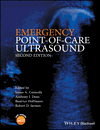Ultrasound-Guided Vascular Access
Summary
Obtaining venous access is often a vital component of emergency department patient care. In patients with difficult venous access, or who urgently require central venous access for therapy and resuscitation, ultrasound guidance can reduce procedural time and complications, and is associated with greater patient satisfaction. Ultrasound-guided intravenous access, whether peripheral or central, can be performed using a one-person or two-person technique. The one-person technique can be either static or dynamic. In the two-person technique, one person handles the transducer while a second person places the intravenous line. The transducer can be oriented transversely or longitudinally with respect to the vessel. For central ultrasound-guided venous access, the equipment of stock central line kits is adequate. For ultrasound-guided peripheral access, extralong catheters are ideal. Ultrasound-guided central venous access is a sterile procedure. The patient should be prepped and draped using standard protocols.



